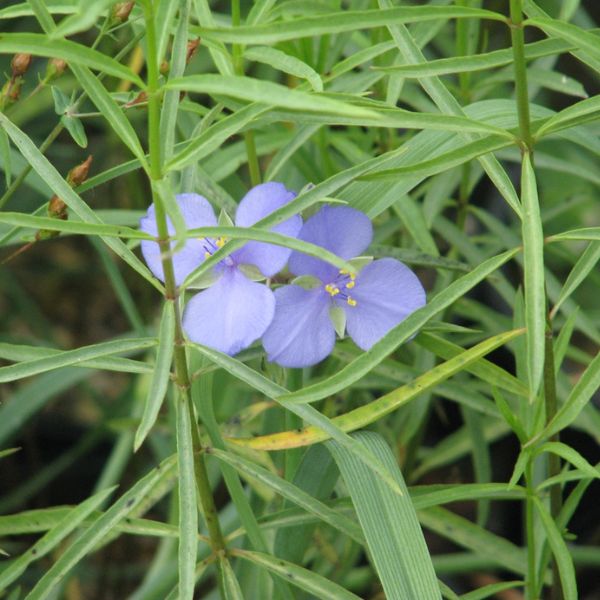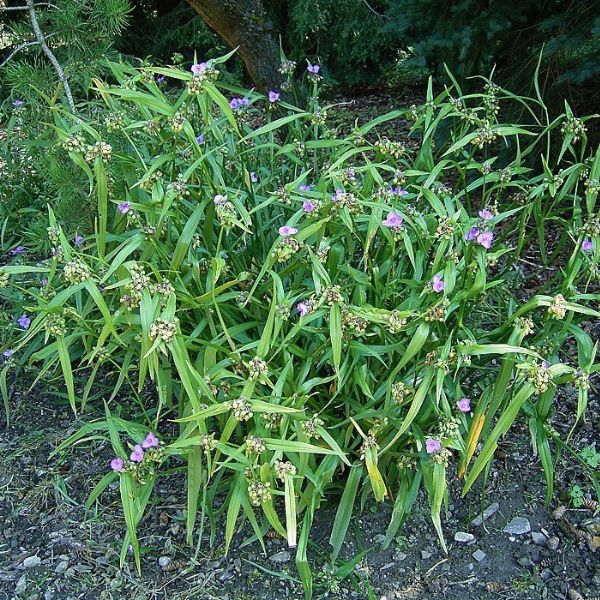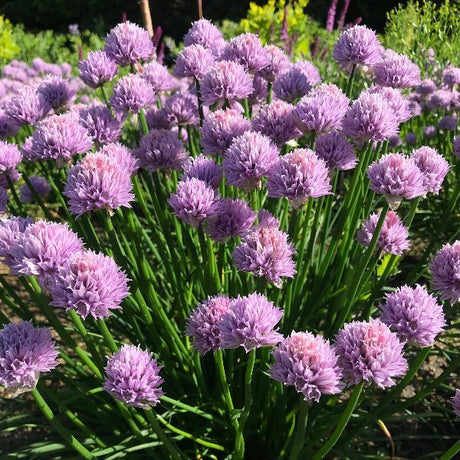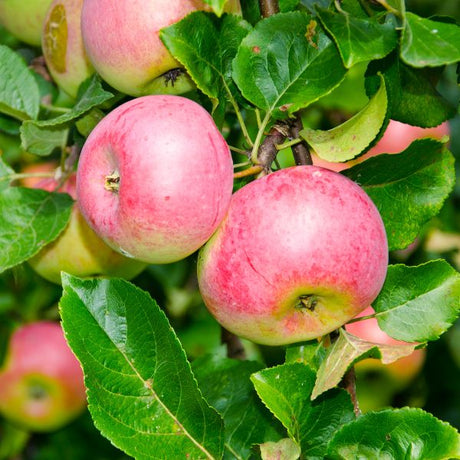Ohio Spiderwort
Tradescantia ohiensis
Plant Sentry™
Plant Sentry™

Plant Sentry™ Protected
Your order is protected by our compliance system that:
- Prevents restricted plants from shipping to your state
- Ensures plants meet your state's agricultural requirements
- Protects gardens from invasive pests and diseases
Delivery and Shipping
Delivery and Shipping
Delivery and Shipping
Fast, Safe Plant Delivery
Ships in 3-4 business days • Tracking provided • Weather protected
| Under $50 | $9.99 |
| $50 - $99.99 | $14.99 |
| $100 - $149.99 | $16.99 |
| $150 - $198.99 | $24.99 |
| $199+ | FREE |
✓ Zone-specific timing • ✓ Professional packaging • ✓ Health guarantee
Understanding Plant Options
Nature Hills offers plants in two main formats:
- Container Plants: Grown in pots with soil, sized by container volume and plant age
- Bare Root Plants: Dormant plants without soil, sized by height measurements
Container Plant Sizes
Container sizes indicate plant age and growing capacity rather than liquid volume equivalents. Our containers follow industry-standard nursery "trade gallon" specifications, which differ from standard liquid gallon measurements.
Young Plants (6 months to 18 months old)
| Container Size | Actual Volume | Metric Equivalent |
|---|---|---|
| 2" x 2" x 3" | 0.18 - 0.21 dry quarts | 0.20 - 0.23 dry liters |
| 4" Container | 0.31 - 0.87 dry quarts | 0.35 - 0.96 dry liters |
| 4.5" Container | 0.65 dry quarts | 0.72 dry liters |
| 6" Container | 1.4 dry quarts | 1.59 dry liters |
| 1 Quart | 1 dry quart | 1.1 dry liters |
| 5.5" Container | 1.89 dry quarts | 2.08 dry liters |
Established Plants (18 months to 2.5 years old)
| Container Size | Actual Volume | Metric Equivalent |
|---|---|---|
| 2 Quart | 2 dry quarts | 2.2 dry liters |
| #1 Container | 2.26 - 3.73 dry quarts | 2.49 - 4.11 dry liters |
| 5" x 5" x 12" | 3.5 - 4.3 dry quarts | 3.85 - 4.74 dry liters |
Mature Plants (2-4 years old)
| Container Size | Actual Volume | Metric Equivalent |
|---|---|---|
| #2 Container | 1.19 - 1.76 dry gallons | 5.24 - 7.75 dry liters |
| #3 Container | 2.15 - 2.76 dry gallons | 8.14 - 12.16 dry liters |
Large Plants (3-5 years old)
| Container Size | Actual Volume | Metric Equivalent |
|---|---|---|
| #5 Container | 2.92 - 4.62 dry gallons | 12.86 - 20.35 dry liters |
| #6 Container | 5.25 - 6.01 dry gallons | 23.12 - 26.42 dry liters |
| #7 Container | 5.98 - 6.53 dry gallons | 26.34 - 28.76 dry liters |
Bare Root Plants
Bare root plants are sold by height from the root system to the top of the plant. Plants may exceed minimum height requirements.
Common Sizes:
- Trees: 1 foot, 2 feet, 3 feet, 4 feet, 5 feet, 6 feet
- Shrubs & Perennials: 1 foot, 18 inches, 2 feet
Important Notes
Container Volume Specifications
- Trade Gallon Standard: Our containers follow industry-standard "trade gallon" specifications established by the American National Standards Institute (ANSI Z60.1) for nursery stock
- Volume Variations: Actual soil volume may vary due to plant root systems and growing medium settlement
- Age Indicators: Container size primarily indicates plant age and maturity rather than liquid volume equivalents
Growing Conditions
- Plant size can vary based on variety and growing conditions
- Container size helps indicate plant maturity and establishment level
- Larger containers generally mean more established root systems and faster landscape establishment
Seasonal Availability
- Bare root plants are available seasonally when dormant
- Container plants are available throughout the growing season
- Specific varieties may have limited availability in certain sizes
Questions?
For questions about specific plant sizes or availability, please contact our plant experts who can help you choose the right size for your landscape needs.

Plant Sentry™ Protected
Your order is protected by our compliance system that:
- Prevents restricted plants from shipping to your state
- Ensures plants meet your state's agricultural requirements
- Protects gardens from invasive pests and diseases
Plant Profile & Growing Essentials
Cold hardy, Low Maintenance, Native, Flowering, Clay Tolerant, Drought resistant, and Attracts pollinators
Specifications
Specifications
-
Botanical Name
-
Height
-
Width
-
Growing Zones
-
Sunlight
-
Growth RateModerate
-
Flower Color
-
Leaf Color
-
NativeYes
-
Pollinator FriendlyYes
-
Bloom PeriodEarly Summer, Late Summer, Late Spring
-
Does Not Ship ToAK, HI, ID, MT
Planting & Care Instructions
Planting & Care Instructions
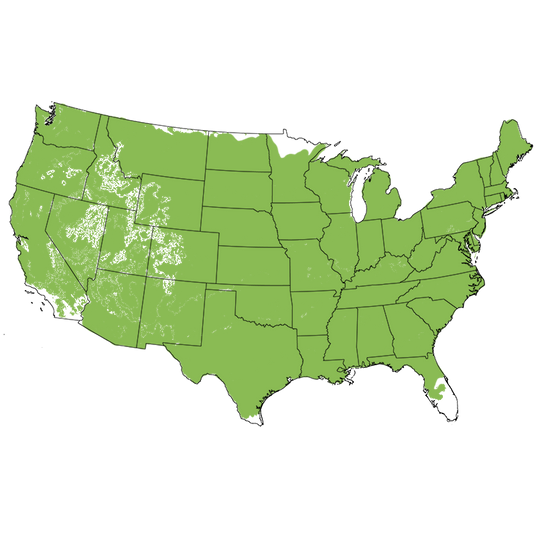
Growing Zones 4-9
Ohio Spiderwort: A Native Pollinator Magnet!
A pretty purple native wildflower, the Ohio Spiderwort (Tradescantia ohiensis) is a resilient, clumping native perennial that brings electric color and wildlife value to any sunny garden space. With its vivid blue-violet to lavender three-petaled blooms, this herbaceous beauty bursts into action from late spring into early summer and may sporadically rebloom later in the season!
Also known as Bluejacket, when flowering, small clusters open each morning, with each individual bloom lasting just a single day—yet the plant keeps pumping out new buds in succession. Known for attracting bees and butterflies, Ohio Spiderwort is non-fragrant but makes up for it with charm, color, and adaptability! It's a native wildflower workhorse for sunny or lightly shaded areas, especially in prairie, cottage gardens, or meadow-style gardens.
Its form is upright, reaching 2-3 feet tall and 18-30 inches wide with graceful arching stems that sometimes lean or flop a bit by midsummer. Previously known as Smooth Spiderwort, the long, narrow sword-shaped leaves are grass-like, adding texture and motion to the garden even when it's not in bloom. After blooming, seed capsules form that can self-sow lightly if left in place.
Key Features
- Native perennial wildflower with a clump-forming habit
- Violet-blue to lavender three-petalled blossoms from late spring to early summer
- Long, slender grass-like leaves with lovely texture
- Deer and rabbit-resistant
- Pollinator-friendly; attracts bees and butterflies
- Tolerates clay soil and light shade
- Cold hardy in USDA Zones 4–9
Landscaping Uses
Native from the Midwest to the eastern U.S., Tradescantia ohiensis is beloved for its toughness and cultural significance. Used historically by Indigenous peoples for medicinal salves and infusions, it's also symbolic of resilience and calm in the face of adversity. The soft, arching mounds blend beautifully in naturalized or structured spaces!
- Great in native plant gardens or prairie-style beds
- Excellent in cottage, mixed perennial, or wildflower meadows
- Use in rain gardens or low spots with moisture
- Perfect along sunny borders or woodland edges
- Lovely in mixed containers (with support or companions)
- Does well in both prairie restoration sites and home gardens alike
- Softens hardscape edges like paths or patios
- Great for erosion control around moist areas, streams, and water gardens
Care and Maintenance
The foliage may go dormant in heat or drought but often returns with cooler temps or a haircut. Related to other Spiderworts like Tradescantia virginiana, it thrives in USDA Zones 4–9, handling clay soil, urban pollution, and everything Ma Nature throws its way!
Spiderwort tolerates dry spells once established, and drier conditions when planted in more shade. Ohio Spiderwort is an herbaceous perennial, meaning it dies back in fall and returns each spring. It's a sturdy, low-maintenance native that handles diverse soil types and partial shade.
- Planting Time: Spring or fall
- Sun Needs: Full sun to partial shade
- Soil Needs: Adaptable; prefers well-drained loam but tolerates clay and poor soils
- Moisture Needs: Moderate moisture; tolerates drought once established
- Arborist Mulch: Apply a 3–4 inch layer of mulch to retain moisture and suppress weeds
- Fertilization Needs: Generally low; a layer of compost in spring helps vigor
- Pruning Info: Shear back after bloom to encourage fresh foliage and potential rebloom. Cut back to ground in mid-summer if foliage declines or after frost
- Division Info: Divide clumps every 3–5 years in spring or fall to rejuvenate
- Special Needs/Perks:
- Deer and rabbit-resistant
- Tolerates urban pollution and compacted soils
- Can self-seed lightly in ideal conditions
Ohio Spiderwort Belongs In Your Garden!
You'll be caught in the web of Ohio Spiderwort's simple beauty and tough spirit. With its brilliant, fleeting flowers and graceful grassy foliage, this native perennial weaves charm, wildlife value, and easy care into your garden tapestry. Let this resilient bloomer bring in pollinators and naturalize quietly without fuss.
Order now at Nature Hills Nursery and we'll ship at the ideal planting time for your growing zone.
Frequently Asked Questions
Is Ohio Spiderwort invasive?
No, it is a native plant and not considered invasive. It may self-seed lightly but is easy to manage.
Does Ohio Spiderwort bloom all summer?
It blooms mainly in late spring to early summer but may rebloom if cut back after the first flush.
Will Spiderwort grow in shade?
Yes, it tolerates part shade, though it blooms best with at least 4–6 hours of sun per day.
Is Ohio Spiderwort good for pollinators?
Absolutely—it attracts native bees, bumblebees, and butterflies!
Does Ohio Spiderwort spread?
It forms clumps and can slowly spread into larger clumps over time. Division keeps it tidy and promotes vigor.
Can Ohio Spiderwort grow in clay soil?
Yes, it's very tolerant of clay and poor soils, making it ideal for tough spots.

